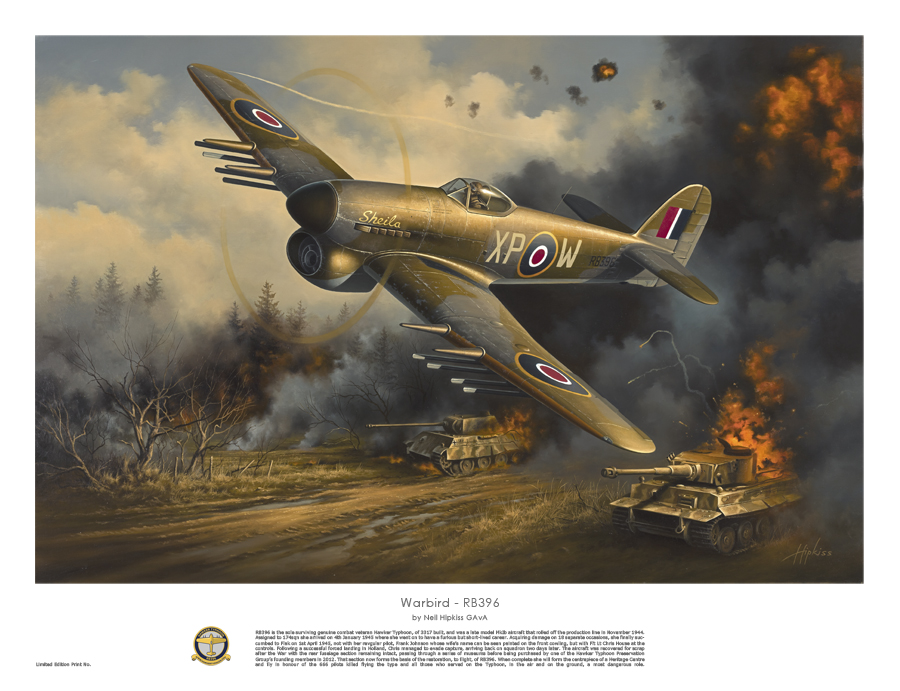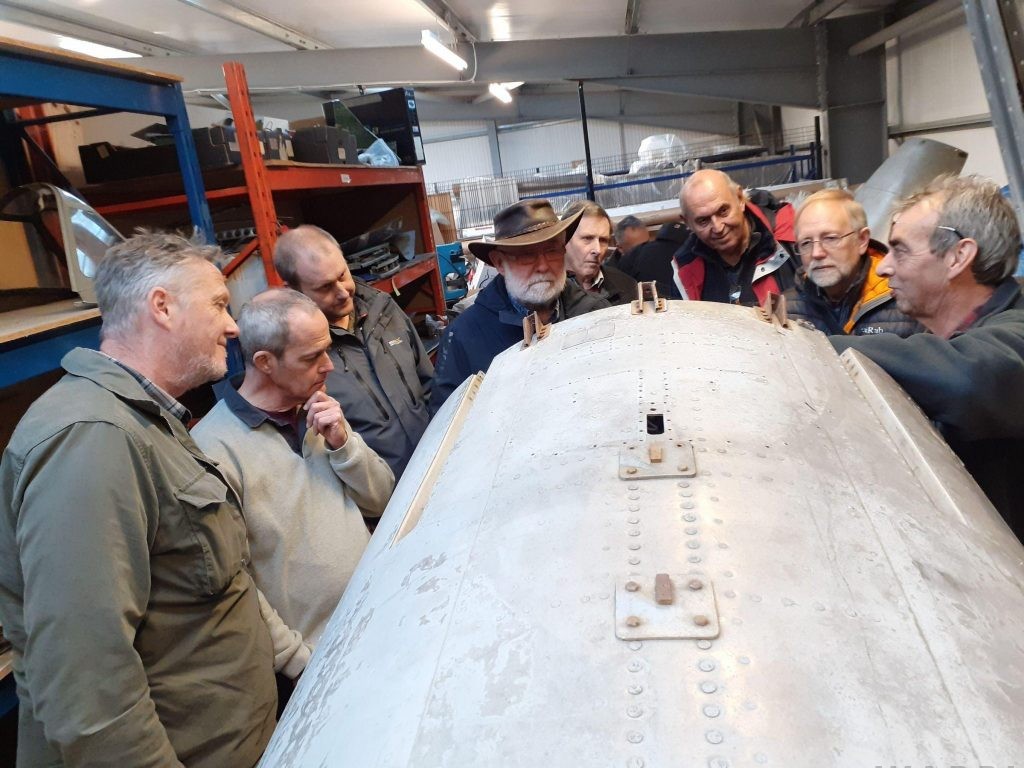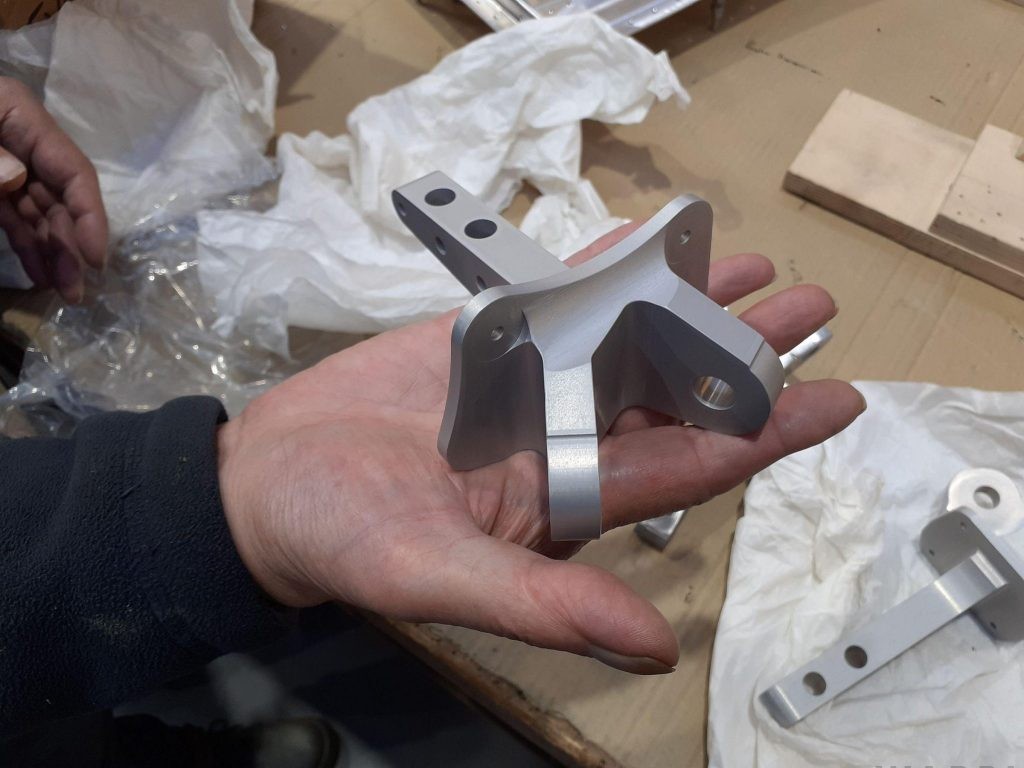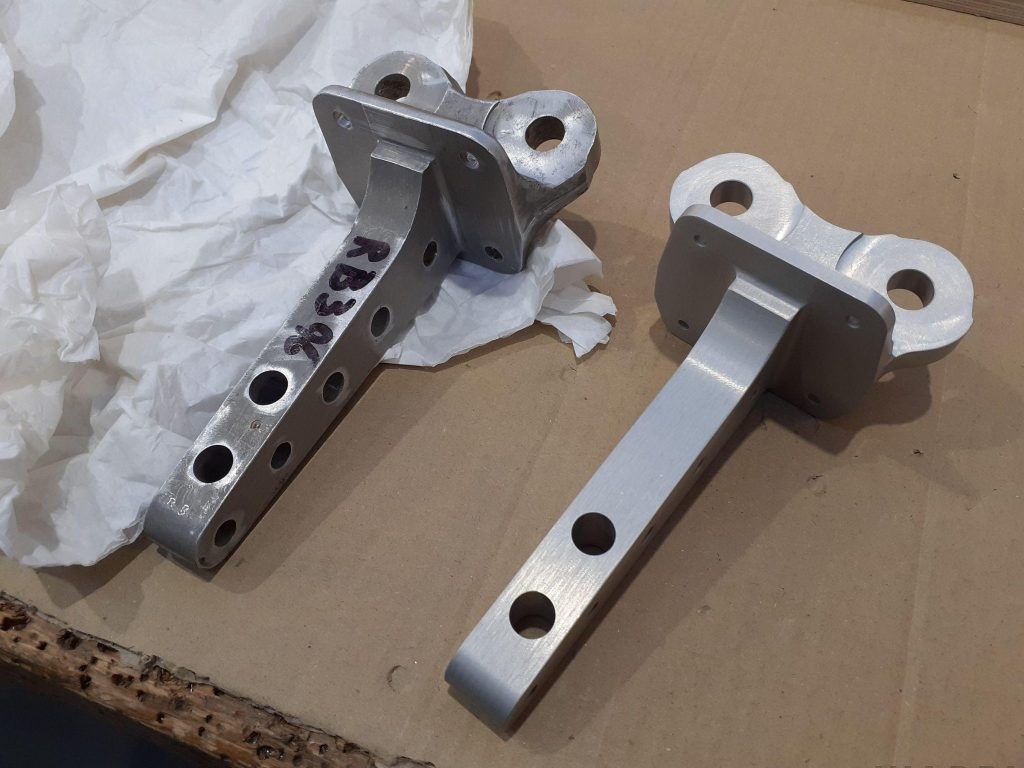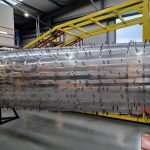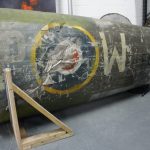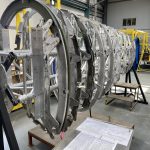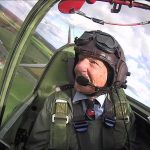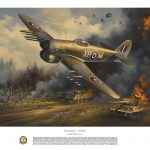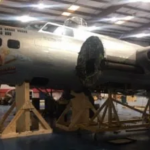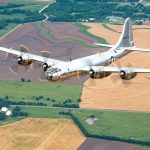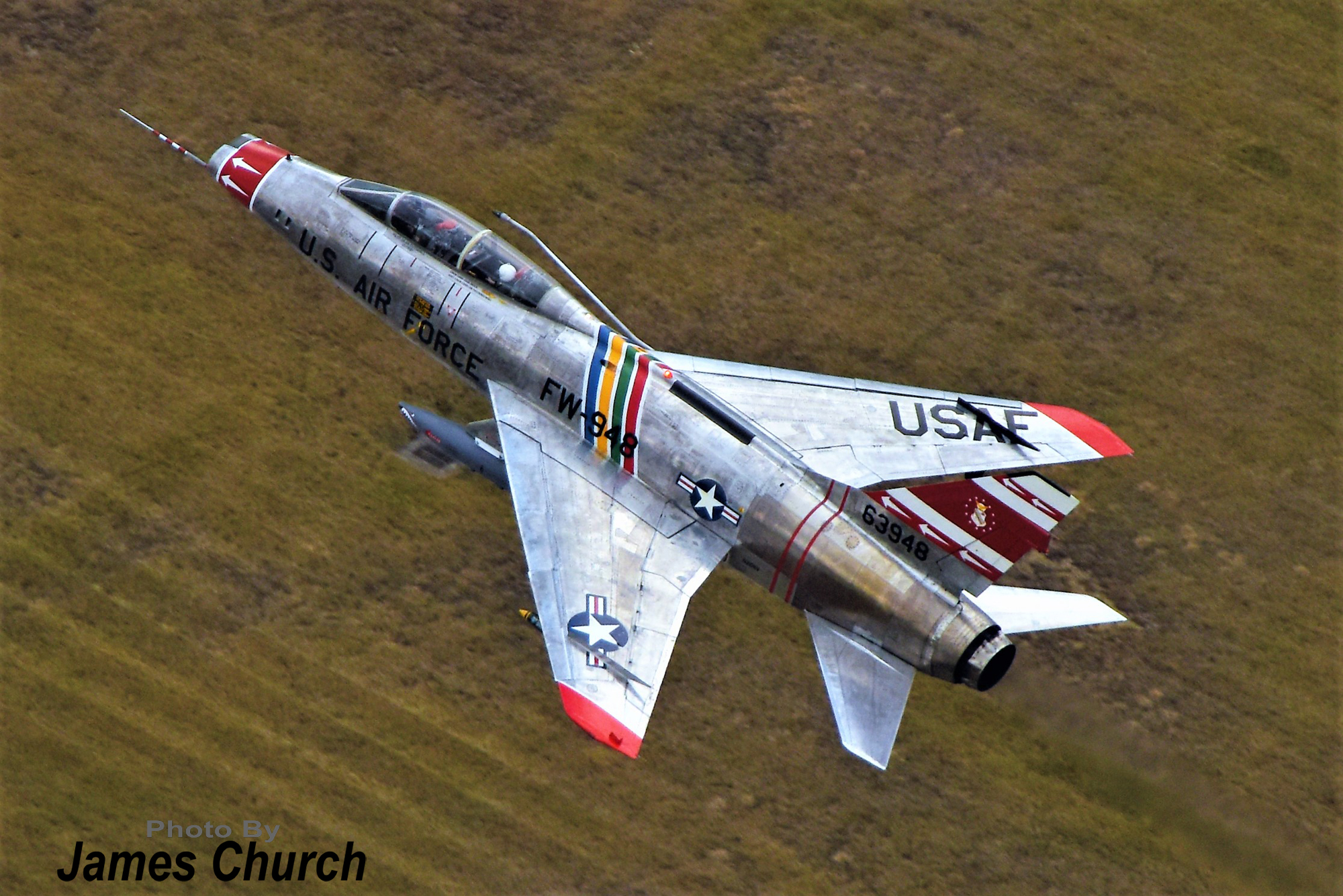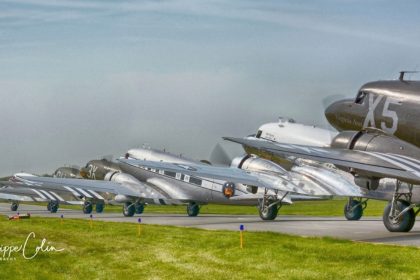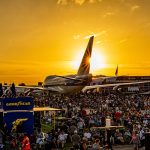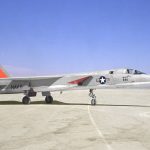As many will know, the Hawker Typhoon is one of the rarest production fighter aircraft from WWII, with only one known complete survivor in preservation today. The Hawker Typhoon Preservation Group is working very hard to change this situation, and is presently endeavoring to rebuild Hawker Typhoon Mk.Ib RB396 using the original rear fuselage from this aircraft as a stating point. Sam Worthington-Leese is spearheading this project, and he wrote the following report describing how the projects faring presently, so without further ado… here is Sam!
On November 25th we made another visit to Airframe Assemblies on the Isle of Wight to check out progress with RB396. This time there were ten supporters who responded to the invitation in our October eNewsletter, with one member showing real dedication, having traveled all the way from Edinburgh for the opportunity to get “eyes on” RB396’s rear fuselage.
Special thanks must go to Wightlink ferries who again covered the cost of our group making the crossing. After discussion with Dave Hands, who has been organizing these visits, Wightlink pledged their future support to bring RB396 back “home” to the mainland when the rear fuselage is complete. Indeed, the company will feature a short write-up about the project in their own newsletter, which is great to see.
Chris, one of the engineers at Airframe Assemblies, was again our host for the tour. Chris has been very involved in the rebuild of RB396’s rear fuselage, so for those in our group who hadn’t previously made the trip to see RB396, he ran through the processes and materials they use and also discussed the Hawker Typhoon’s drawings in detail. Chris focused in particular on the engineering around Frame K (the aft-most bulkhead joint in the Typhoon’s rear fuselage section) and the wartime modifications which Hawker made to stiffen up this area. Even though it was a late model Mk.Ib with the redesigned tail, there was clear evidence that RB396 had these modifications included in its manufacture. Chris ran through the additions of the fish plates and referenced the drawings they are using. Our group kept the questions coming, and all went into fine detail. It made such a difference to see the actual frame area as well as the drawings, so it was easier to understand how it all went together, and how the wartime changes affected the overall design. Each member of our group was fascinated by this discussion.
Airframe Assemblies has made excellent progress in the areas of the vents, flare ‘chute’, and viewing window. Other areas of progress with the project include the maintenance access door and the spring-loaded foothold.
One guest asked Chris: “How does it feel taking something from a drawing to a finished assembly?” He responded by saying: “It’s very satisfying, but it seems a shame to paint it as it looks so good as bare metal!” On that note, it is worth mentioning that when complete, the rear fuselage will be painted in primer only at this stage. Interestingly, when we had the primer paint professionally color-matched, we discovered that it was not of a standard shade, so we have had to have the paint mixed especially for the our rebuild… yet another small, more costly, and ultimately mostly unseen step we have taken in our effort to make this rebuild as authentic as possible.
As for the final paint scheme which RB396 will wear when she is complete, we haven’t decided that yet. There are many ideas for the livery, and we will cross that bridge when the time is right, but we will certainly entertain supporter opinion regarding the options, and maybe even conduct a vote; time will tell. For now, we are focusing on the immediate next steps in the rebuild, and our efforts to raise the funds required – There is little point in discussing paint schemes when we still have to raise £4.5million to just to arrive at that position! What we do know, however, is that we intend for RB396 to represent all Typhoons and their crews – both air and ground, so the scheme selected needs to represent that consideration.
Supporters were also taken to see the Tempest fuselage upstairs. Chris went into depth on how frames are sometimes made from two extrusion pieces which are not symmetrically opposite – so the remanufacturing process is very expensive. He also explained how similar the Typhoon fuselage section they were working on was to the similar unit in the Hawker Tempest – almost identical, in fact.
We received feedback on the visit from our band of supporters: “A small note to say a very big thank you for all your help/assistance in organizing the visit on Thursday. Really enjoyed it, it was great to meet the people involved & see the work done so far. Gives a good feeling that progress is being made & by the right people. It also brings home the enormity of the whole project. Now I’ve seen the work firsthand I am so impressed with how AA goes about the work and records absolutely everything. I had no idea the choice of material was so important and so difficult to find. Thank you for arranging yesterday’s visit. Great day out, really enjoyed seeing the progress on our Typhoon and talking to the very enthusiastic staff of AA.”
The supporters on this visit were first to see some newly machined parts for the rebuild, these being in the shape of three of these end fittings for Frame A, as seen above. These are the brackets which affix the front of the rear fuselage onto the rear of the cockpit. If you follow us on social media, then you will have seen the question posed a few weeks ago – how much do you think these cost?
For background, we owned a complete and original set of more than four of these fittings, and only four are required. Unfortunately, only one of our pieces passed the requisite airworthiness tests which means that we had to have three made. The originals were used as patterns, however, the new ones had to be made from drawings created from the originals. Coupled with that expense were all the associated stress analyses, new drawings, certification and then find a machine shop which could turn them around at short notice (the shop chosen by AA made them in three weeks, as opposed to a three-month usual turnaround), and factoring in that it was a small batch – so, how much do you think they cost?
The answer is £15,462! This will give you some idea as to why the overall build cost for rebuilding RB396 will be ~£5.5 million…
The latest time-lapse video of the rebuild is up on our YouTube channel. If you havn’t already, please do subscribe to the channel and have a look through all of our other videos. It is our intention to document as much of the rebuild as we can and the videos will be uploaded to the channel.
Visits such as the recent journey to Airframe Assemblies, and receiving behind-the-scenes access to the rebuild, are just one of the many benefits associated with being a project supporter. Subscriptions start at the Bronze level, from just £25 per year. The 2022 Bronze package has just opened up for new sponsors and runs until December 31st, so now is the perfect time to join. Alongside visits such as these, supporters receive regular updates (this progress update was shared directly to them, with much more associated information in December) via the regular eNewsletter, advanced notice on future events and visits, supporter-only merchandise (including the opportunity to purchase material taken from RB396’s rear fuselage) and discounts on the online shop. But the best benefit to joining is the knowledge that you are supporting the rebuild of this unique combat veteran which some have called “the most important warbird restoration in the world.”
Support tiers commence at Bronze and increase to Silver, Gold, Platinum, and Diamond, depending upon how much you are able to contribute. Rewards and benefits increase substantially in line with contributions. For those looking for a lower but regular contribution, there is the “Sabre Club” which is £2 per month and for which you receive regular updates on the project. Details of all the options are available in the “Support Us” section of the website.
Many thanks to Sam Worthington-Leese for this latest update. Anyone who wishes to help the Hawker Typhoon Preservation Group with their mission to resurrect an airworthy example of Britain’s finest WWII-era ground attack aircraft should click this link!







